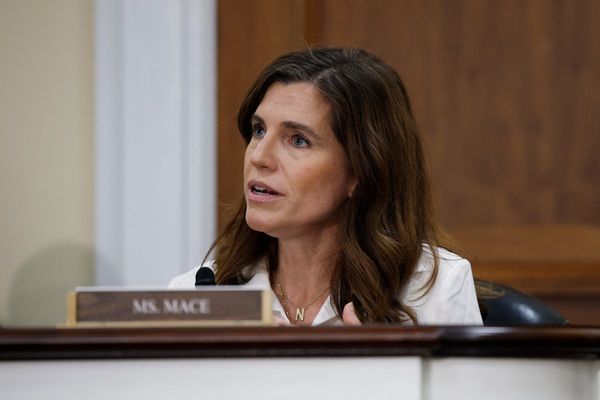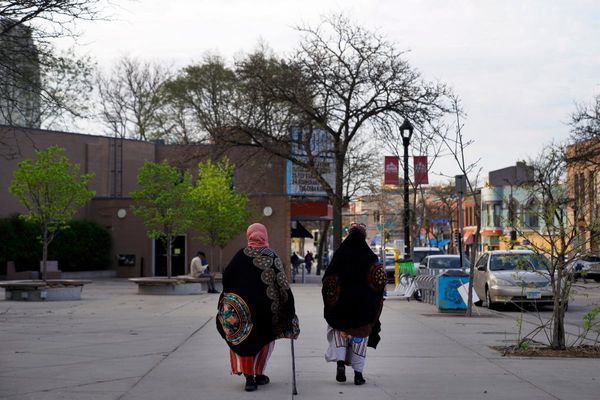
Civil rights trailblazer Ida B. Wells-Barnett had her legacy further cemented in Chicago on Wednesday with the unveiling of the “The Light of Truth” monument in Bronzeville.
The monument was dedicated at a ceremony with a hopeful air featuring many speeches from Black women, who honored the memory of the educator and investigative journalist known for her quest against the lynching of Black people and anti-Black discrimination.
Created by African American abstract sculptor and Chicago artist Richard Hunt, the bronze work features what observers described as a flame on top with her likeness on the side of the base with one of her well-known quotes: “The way to right wrongs is to turn the light of truth upon them.”
“Most people still don’t know what she did,” Daniel Duster, great grandson of Wells-Barnett, said. “And so the fact that Chicago has decided to honor her and it’s been 13 years in the making, I have a feeling of joy, excitement, appreciation and humbleness.”
/cdn.vox-cdn.com/uploads/chorus_asset/file/22692574/IDABWELLS_070121_18.JPG)
Although frequently at odds politically, speakers Mayor Lori Lightfoot and Ald. Sophia King (4th) were in agreement that Wells-Barnett paved the way for their careers and their ability to take leadership roles in city politics.
“I stand on her shoulders as an elected official, like literally, because during the women’s suffrage movement, the state of Illinois got the right to vote almost over 10 years before the 19th Amendment was passed. And I think it passed because of efforts like hers,” King said.
In 1913, Wells-Barnett founded the Alpha Suffrage Club, the first Black suffrage group to advocate for Black women’s right to vote. After failing to lobby support from the white Illinois delegation that same year, Wells-Barnett made a place for herself at the front of the Illinois delegation parade, marching between two white supporters. Her work helped lead to the ratification of the 19th Amendment in Illinois — the first state to do so — which eventually led to all American women getting the right to vote.
The monument is located at 37th Street and Langley Boulevard at the former site of the housing development named for her, Ida B. Wells Homes. The homes stood for 60 years before being demolished in 2011 to make way for a mixed-income housing project, Oakwood Shores, which is predominantly Black.
Congress Parkway was renamed for Wells in 2018.
Journalist Nikole Hannah-Jones, who helped create the 1619 Project for the New York Times, said the fight for racial justice continues.
“We are actually fighting against the same type of tyranny and white supremacy that Ida B. Wells was fighting against all those years ago,” Hannah-Jones said in reference to the voter suppression laws that have been passed in some states and the attack on so-called critical race theory by conservatives. “These are going hand in hand with memory laws that are being passed to not only make it harder for Black people to vote, but also to make it harder to understand why it is hard for Black people to vote. They won’t even allow us to teach about Ida B. Wells, because they say we make certain students uncomfortable when we confront them with the racist history of this country.”
/cdn.vox-cdn.com/uploads/chorus_asset/file/22692583/IDABWELLS_070121_11.JPG)
Lightfoot agreed Wells’ fight was not over.
“We also have to strive to live up to her life’s work,” Lightfoot said. “The fight against systemic racism continues. It’s not over. We must continue the work of unmasking and eradicating systemic racism in all of its manifestations. This is the essential fight of our time.”
Anthony Rogers, co-chair of the Ida B. Wells Monument, said 4,300 people donated to fund the monument. Additional funds that weren’t used for the monument went to the city of Chicago’s public arts program and will also go toward phase two of the Oakwood Shores Redevelopment Plan for more mixed-income housing units.
“We’re standing on sacred land,” said Lamont Baker, an Ida B. Wells Homes resident. “This is a touching moment, because right there across the street is where my grandmother ... birthed one of the biggest families in Ida B. Wells Homes.”
Ald. King said the city needs to do more to keep the community safe and affordable and provide other resources that are long overdue to the community. The monument is part of a first phase being undertaken by the CHA and others to revitalize the development in Bronzeville.
“This community has been forgotten several times. So I hope this monument is a constant reminder along with people like myself and others who understand history and understand what it means not to repeat it,” King said. “But, you know, we also have to do more than monuments. There are more important things like gun violence and racial disparity.”
/cdn.vox-cdn.com/uploads/chorus_asset/file/22692585/IDABWELLS_070121_14.JPG)







